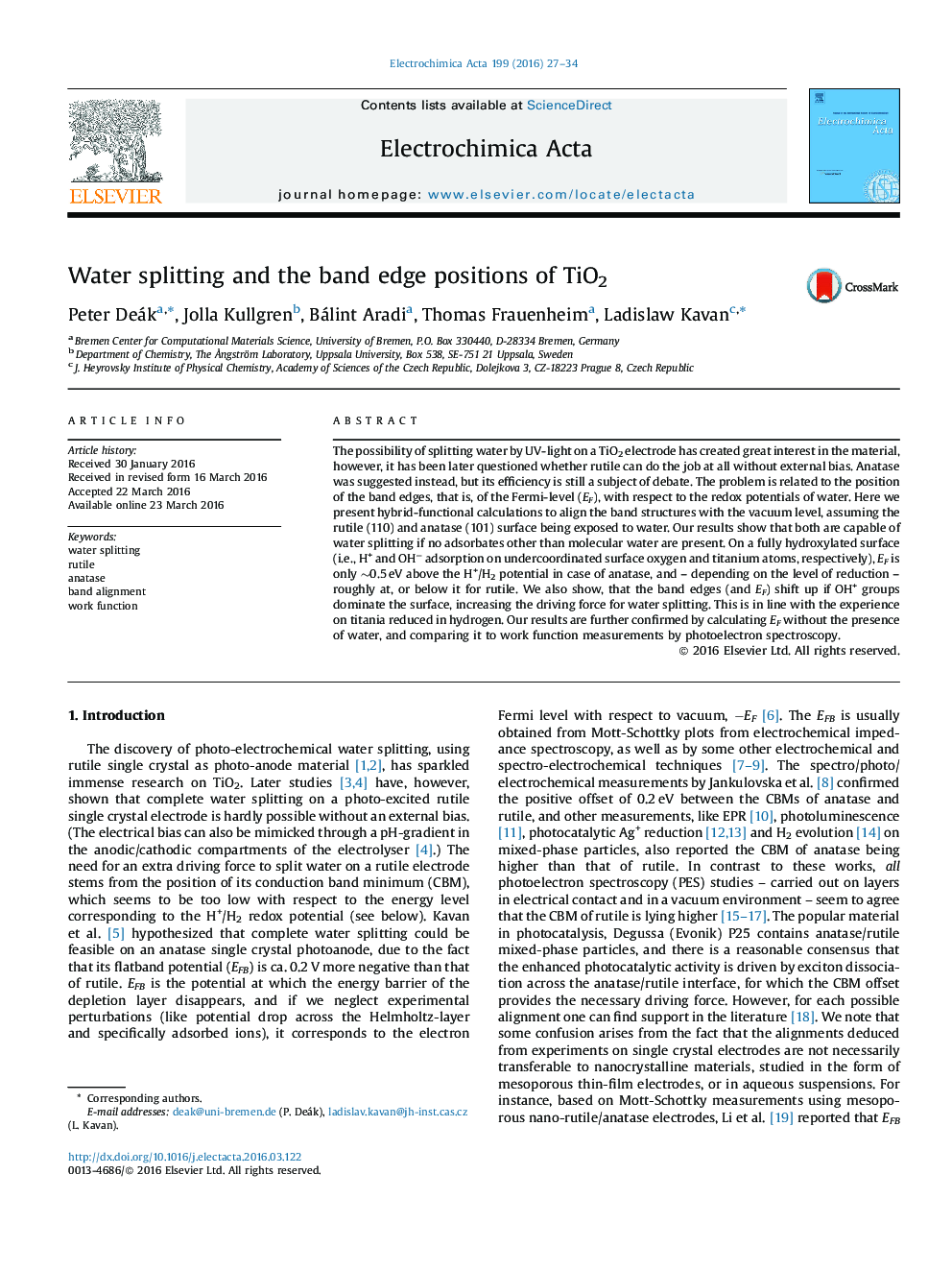| Article ID | Journal | Published Year | Pages | File Type |
|---|---|---|---|---|
| 6607685 | Electrochimica Acta | 2016 | 8 Pages |
Abstract
The possibility of splitting water by UV-light on a TiO2 electrode has created great interest in the material, however, it has been later questioned whether rutile can do the job at all without external bias. Anatase was suggested instead, but its efficiency is still a subject of debate. The problem is related to the position of the band edges, that is, of the Fermi-level (EF), with respect to the redox potentials of water. Here we present hybrid-functional calculations to align the band structures with the vacuum level, assuming the rutile (110) and anatase (101) surface being exposed to water. Our results show that both are capable of water splitting if no adsorbates other than molecular water are present. On a fully hydroxylated surface (i.e., H+ and OHâ adsorption on undercoordinated surface oxygen and titanium atoms, respectively), EF is only â¼0.5Â eV above the H+/H2 potential in case of anatase, and - depending on the level of reduction - roughly at, or below it for rutile. We also show, that the band edges (and EF) shift up if OH+ groups dominate the surface, increasing the driving force for water splitting. This is in line with the experience on titania reduced in hydrogen. Our results are further confirmed by calculating EF without the presence of water, and comparing it to work function measurements by photoelectron spectroscopy.
Related Topics
Physical Sciences and Engineering
Chemical Engineering
Chemical Engineering (General)
Authors
Peter Deák, Jolla Kullgren, Bálint Aradi, Thomas Frauenheim, Ladislaw Kavan,
